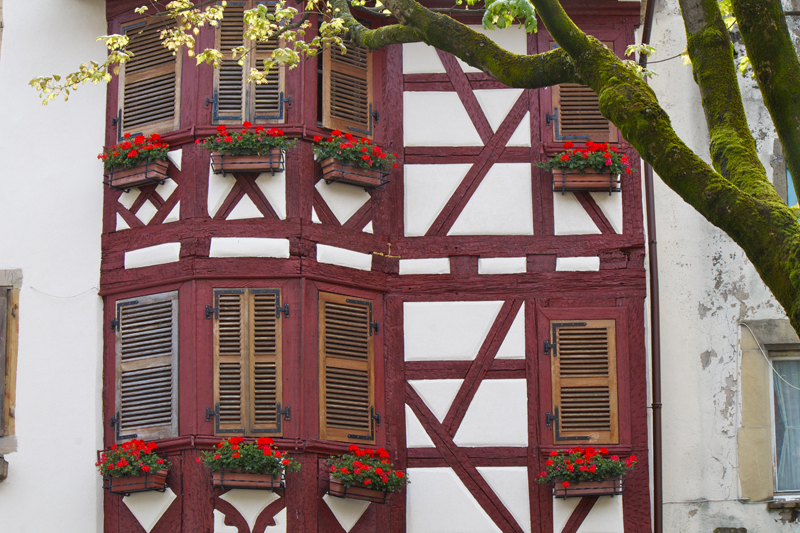In our last blog post we looked at two types of window treatments for the historic home: shutters and curtains. While these are both elegant choices, today we’ll address to other popular ways of controlling light and adding privacy to your home while enhancing its period features through the use of blinds and roller shades.
Blinds
The use of blinds in homes stretches all the way back to ancient Egypt, when blinds were made from the thick reeds that grew in the Nile. Today, wooden and metal blinds are used in homes across the world, and can accentuate the features of your historic home, particularly drawing attention to any detailed woodwork that may frame your windows, which are often covered up by curtains.
Wooden blinds were wildly popular from the Georgian period through the 1940s, and today made to measure blinds continue to grace historic homes across the country. Often called “Venetian blinds” (so named because they were allegedly developed for the European and American market by Venetian traders, who were inspired by the Persian original), these blinds connected wooden slats together with long strips of cloth, allowing the blinds to be adjusted to allow greater or lower levels of light. One of the primary appeals of wooden blinds is that they can be made from almost any wood and can be stained or painted in any colour, allowing you to choose the best style to accentuate your decor.
After the 1940s, wooden blinds were supplanted by metal (usually aluminium) blinds. Made to measure metal blinds can perfectly complement the mid-century home, and are available in a wide variety of colours and styles. However, for Regency, Victorian or Edwardian homes, wooden blinds are more authentic touch.
Shades
Roller shades, also called roller blinds, originated in Europe in the 1700s. The original roller blinds did not have the spring mechanism that they have today – instead, the fabric hung in folds and was lifted via strips of string or cloth, very much like today’s modern Roman blinds. In the 19th century, many upscale homes painted their roller blinds with landscapes and other images to add panache to their luxurious houses, and were often used alongside curtains to create a stunning effect.
The thick Holland cloth used to create the roller blinds continued to be the primary material from which they were made until the 1950s, when many companies switched to cheaper vinyl in order to make roller blinds more affordable to a greater number of homes. For historic homes, made to measure roller blinds are a high-quality fabric is an excellent choice, and provide optimum light elimination (making them popular in children’s rooms).
Roman blinds likewise can provide a tailored, elegant look for the historic home. Due to their aesthetically pleasing swaths of fabric, Roman blinds, said to originate in ancient Rome, are witnessing a new surge in popularity. While Roman blinds are not historically authentic for period properties, they can certainly add a welcoming touch to almost any interior style.




